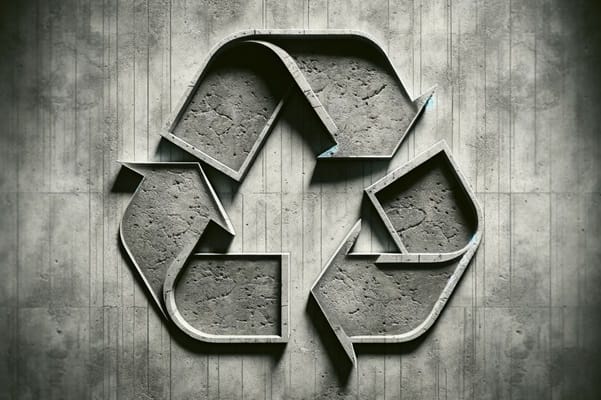As urbanisation continues, the industry’s environmental impact is expected to grow. However, with innovative solutions, it’s possible to reduce its footprint and build a more sustainable future.
In recent years, the demand for greener building methods has gained momentum. Both consumers and companies are increasingly aware of the need for eco-friendly practices. Whether through low-carbon materials, efficient processes, or waste reduction strategies, there are ways to make construction more sustainable. Here are five methods that can make a meaningful difference.
1. Embrace sustainable building materials
One of the most effective ways to reduce pollution in construction is by selecting sustainable materials. Conventional materials such as concrete, steel, and aluminium are highly energy-intensive to produce. They also generate considerable emissions. Fortunately, sustainable alternatives are emerging.
Using recycled and renewable resources
Switching to recycled or renewable materials can make a significant difference. Materials such as bamboo, recycled steel, and reclaimed wood reduce the need for new resources. For example, bamboo grows faster than trees and requires minimal pesticides. It can replace traditional wood in many construction applications, reducing deforestation.
Recycled steel is another powerful option. Producing recycled steel requires less energy than creating new steel, significantly cutting carbon emissions. Not only do these materials save energy, but they also divert waste from landfills, contributing to a circular economy.
Low-carbon concrete alternatives
Concrete is essential in construction but has a heavy environmental cost. Its production is a major source of CO₂ emissions, largely due to the energy-intensive process of making cement. Alternative solutions such as low-carbon concrete, which uses less cement, and geopolymer concrete, which replaces cement entirely, can substantially reduce emissions.
Additionally, companies can explore precast concrete versus cast in place concrete to decide on methods that offer both efficiency and sustainability benefits.
2. Implement energy-efficient machinery and processes
Construction machinery and equipment are essential but often energy-intensive and polluting. To reduce emissions, the industry can adopt energy-efficient machinery and optimise its processes.
Electric and hybrid machinery
Switching to electric or hybrid construction machinery can significantly reduce on-site emissions. Electric machinery is quieter and emits no exhaust fumes, benefiting both the environment and on-site workers.
Although initial investment in electric machinery can be high, long-term savings on fuel and reduced maintenance make it a worthwhile consideration for sustainable construction.
Optimising Building Processes
Efficient building processes reduce both energy use and waste. Construction companies can adopt lean construction principles, which aim to maximise value while minimising waste. By planning carefully, managing inventory effectively, and avoiding overproduction, lean construction not only improves efficiency but also lessens environmental impact. Using digital technology to monitor and streamline operations can further enhance efficiency, minimising fuel consumption and equipment wear.
3. Reduce construction waste through reuse and recycling
Waste generated on construction sites is a major environmental issue, often ending up in landfills. Waste reduction not only lessens landfill impact but also saves on disposal costs and resource use. Implementing a robust waste management system can have positive environmental and financial effects.
Implementing on-site sorting and recycling
On-site sorting is crucial to effective recycling in construction. By categorising materials such as metals, wood, concrete, and plastics at the source, companies can better manage waste and increase recycling rates. Reusing materials within the same project, like reclaimed wood or recycled concrete, saves costs and reduces the need for new resources.
Modular construction for less waste
Modular construction, where building components are produced off-site and assembled on-site, reduces waste substantially. Pre-made modules are manufactured in controlled environments, where waste materials are easier to manage.
Since they are produced with precise measurements, modular components minimise the excess material commonly found on traditional construction sites.
4. Prioritise green building designs
Designing sustainable buildings goes hand-in-hand with sustainable construction methods. A building’s design can significantly impact its environmental footprint over its lifetime. Sustainable building design considers factors like energy efficiency, resource use, and integration with the surrounding environment.
Passive design for energy efficiency
Passive design principles help a building naturally regulate its temperature, reducing the need for heating and cooling systems. By taking advantage of natural light, insulation, and airflow, buildings can maintain comfortable temperatures with minimal energy use.
For instance, orienting buildings to maximise sunlight during winter and minimise heat exposure in summer can significantly lower energy consumption.
Green roofs and urban landscaping
Incorporating green spaces into building design can reduce the heat island effect in urban areas and improve air quality. Green roofs, for example, provide insulation, absorb rainwater, and offer habitat for wildlife. Urban landscaping, such as vertical gardens or tree-lined facades, also enhances aesthetic appeal while providing environmental benefits.
5. Utilise digital technology and smart construction
The construction industry has been slow to adopt digital transformation, but technology has significant potential to reduce environmental impact. Smart construction technology can optimise operations, reduce waste, and enable more sustainable project management.
Building Information Modelling (BIM)
Building Information Modelling (BIM) is a digital representation of a building’s physical and functional characteristics. By creating a 3D model, BIM allows architects, engineers, and builders to collaborate on a project’s entire lifecycle.
This technology can help identify potential issues early, reducing errors and material waste. BIM also enables efficient resource allocation, helping projects stay on budget and minimise excess material use.
Internet of Things (IoT) for efficient resource management
The Internet of Things (IoT) can improve the sustainability of construction projects. IoT sensors monitor and collect data on machinery performance, energy consumption, and material usage. This real-time information allows for better decision-making, ensuring that resources are used efficiently. For instance, IoT technology can signal when machinery requires maintenance, preventing breakdowns that can cause delays and waste.






Leave a Comment